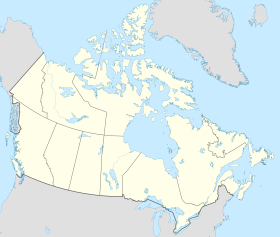
Back Vizegouverneur (Kanada) German Leŭtenanta guberniestro (Kanado) Esperanto Vicegobernador (Canadá) Spanish Lieutenant-gouverneur au Canada French המשנה למושל קנדה HE Luogotenente governatore (Canada) Italian カナダ副総督 Japanese 캐나다의 부총독 Korean Gubernator porucznik prowincji Kanady Polish Лейтенант-губернатор (Канада) Russian
| Monarchy of Canada |
|---|
 |
| This article is part of a series |
In Canada, a lieutenant governor (/lɛfˈtɛnənt/; French [masculine]: lieutenant-gouverneur, or [feminine]: lieutenante-gouverneure) is the representative of the king of Canada in the government of each province. The governor general of Canada appoints the lieutenant governors on the advice of the prime minister of Canada to carry out most of the monarch's constitutional and ceremonial duties for an unfixed period of time[1]—known as serving "His Excellency’s pleasure"—though five years is the normal convention. Similar positions in Canada's three territories are termed "commissioners" and are representatives of the federal government, not the monarch directly.
The offices have their roots in the 16th and 17th century colonial governors of New France and British North America, though the present incarnations of the positions emerged with Canadian Confederation and the British North America Act in 1867, which defined the viceregal offices as the "Lieutenant Governor of the Province acting by and with the Advice the Executive Council thereof."[2] The posts still ultimately represented the government of Canada (that is, the Governor-General-in-Council) until the ruling in 1882 of the Lord Watson of the Judicial Committee of the Privy Council in the case of Maritime Bank v. Receiver-General of New Brunswick,[3] whereafter the lieutenant governors were recognized as the direct representatives of the monarch.[4][5][6] The Constitution Act, 1982 provides that any constitutional amendment that affects the office of the lieutenant governor requires the unanimous consent of each provincial Legislative Assembly as well as the House of Commons and the Senate.
- ^ Victoria (29 March 1867). "Constitution Act, 1867". The Solon Law Archive. V.58. Retrieved 15 January 2009.
- ^ Victoria 1867, V.66
- ^ Saywell, John T. (1957). The Office of Lieutenant Governor: A Study in Canadian Government and Politics. Toronto: University of Toronto Press. pp. 13–14. ISBN 9780802070418.
- ^ Kenney, Jason (23 April 2007). "Speeches – 2007: The Honourable Jason Kenney: Lieutenant Governors Meeting Regina, Saskatchewan". Canadian Heritage. Archived from the original on 11 June 2011. Retrieved 14 May 2009.
- ^ Smith, David E. (1995). The Invisible Crown. Toronto: University of Toronto Press. p. 8. ISBN 0-8020-7793-5.
- ^ Watson, William (1892). "Maritime Bank v. Receiver-General of New Brunswick". Written at London. In Jackson, Michael (ed.). Golden Jubilee and Provincial Crown (PDF). Vol. 7. Toronto: Monarchist League of Canada (published 2003). p. 6. Retrieved 11 June 2009.
{{cite book}}:|periodical=ignored (help)[dead link]
